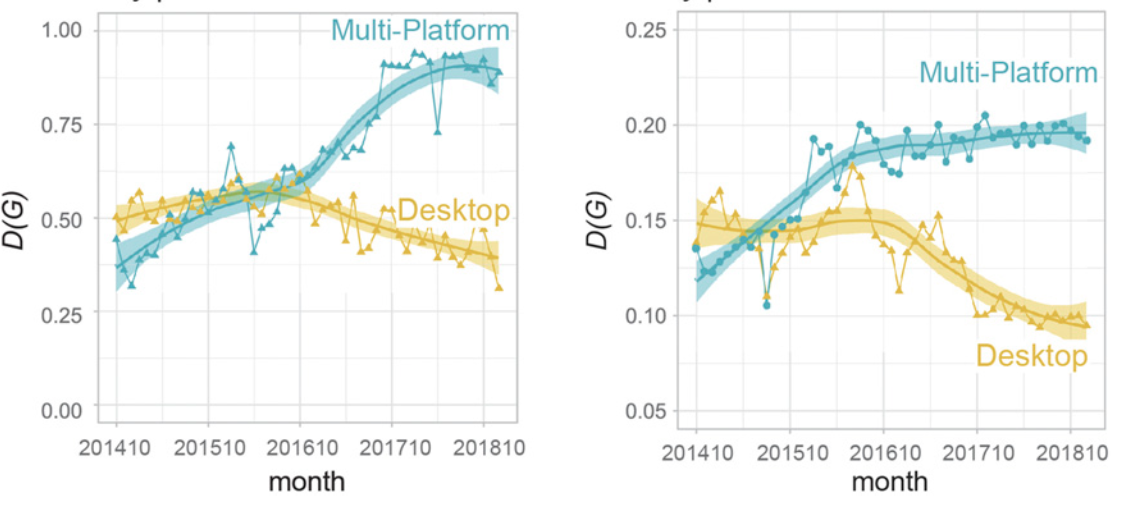In this piece
Exposure to news grows less fragmented with an increase in mobile access
In this piece
Paper published in Proceedings of the National Academy of Sciences
Previous research shows the abundance of digital news sources might be leading to more fragmented audiences, ideological segregation, and echo chambers. Our study resorts to an unprecedented combination of data to show that the increase in mobile access to news actually leads to higher exposure to diverse content and that ideological self-selection explains only a small percentage of co-exposure to news.

Abstract:
The abundance of media options is a central feature of today’s information environment. Many accounts, often based on analysis of desktop-only news use, suggest that this increased choice leads to audience fragmentation, ideological segregation, and echo chambers with no cross-cutting exposure. Contrary to many of those claims, this paper uses observational multiplatform data capturing both desktop and mobile use to demonstrate that coexposure to diverse news is on the rise, and that ideological self-selection does not explain most of that coexposure. We show that mainstream media outlets offer the common ground where ideologically diverse audiences converge online, though our analysis also reveals that more than half of the US online population consumes no online news, underlining the risk of increased information inequality driven by self-selection along lines of interest. For this study, we use an unprecedented combination of observed data from the United States comprising a 5-year time window and involving tens of thousands of panelists. Our dataset traces news consumption across different devices and unveils important differences in news diets when multiplatform or desktop-only access is used. We discuss the implications of our findings for how we think about the current communication environment, exposure to news, and ongoing attempts to limit the effects of misinformation.
Full authors: Tian Yang, Sílvia Majó-Vázquez, Rasmus K. Nielsen, and Sandra González-Bailón

